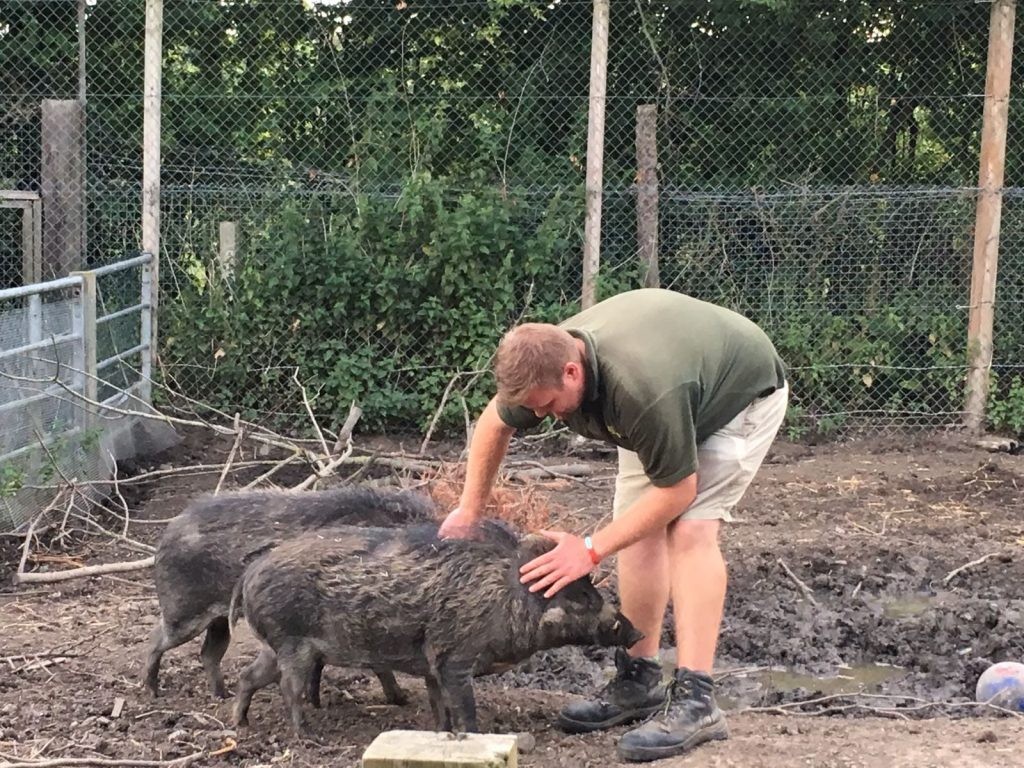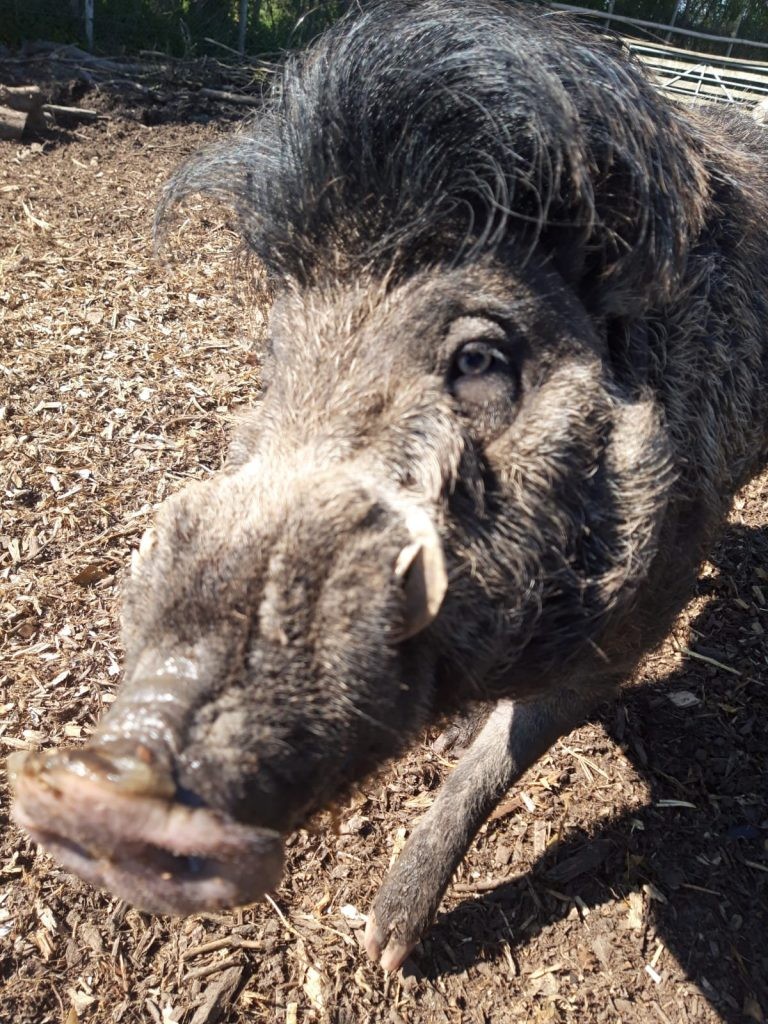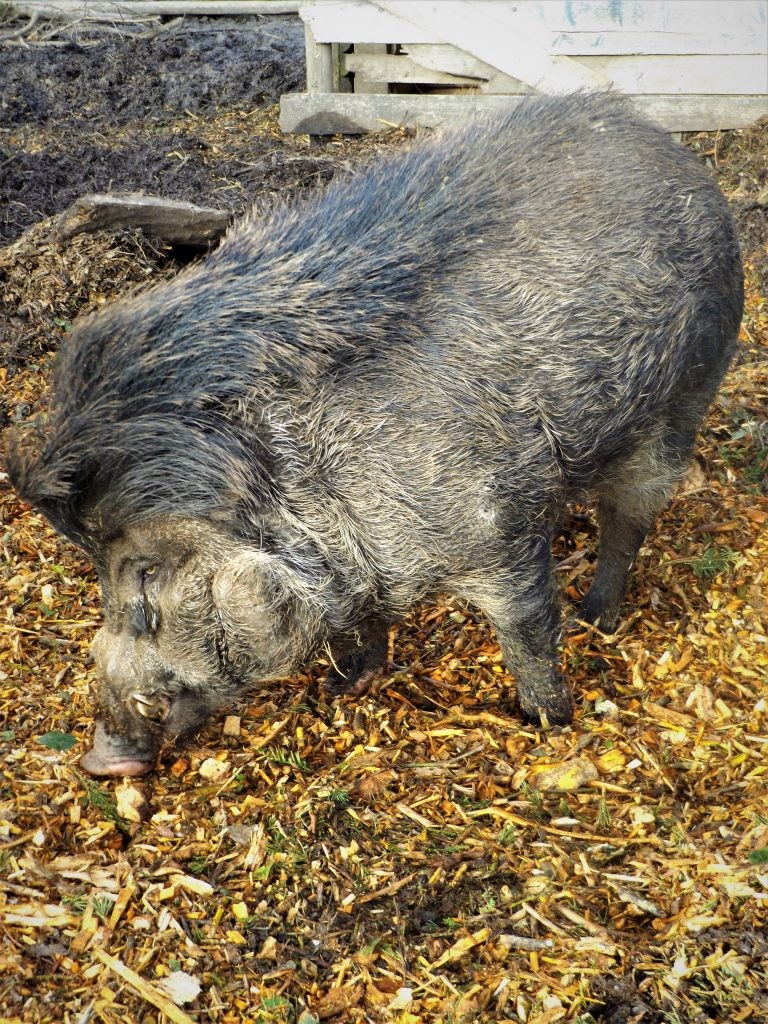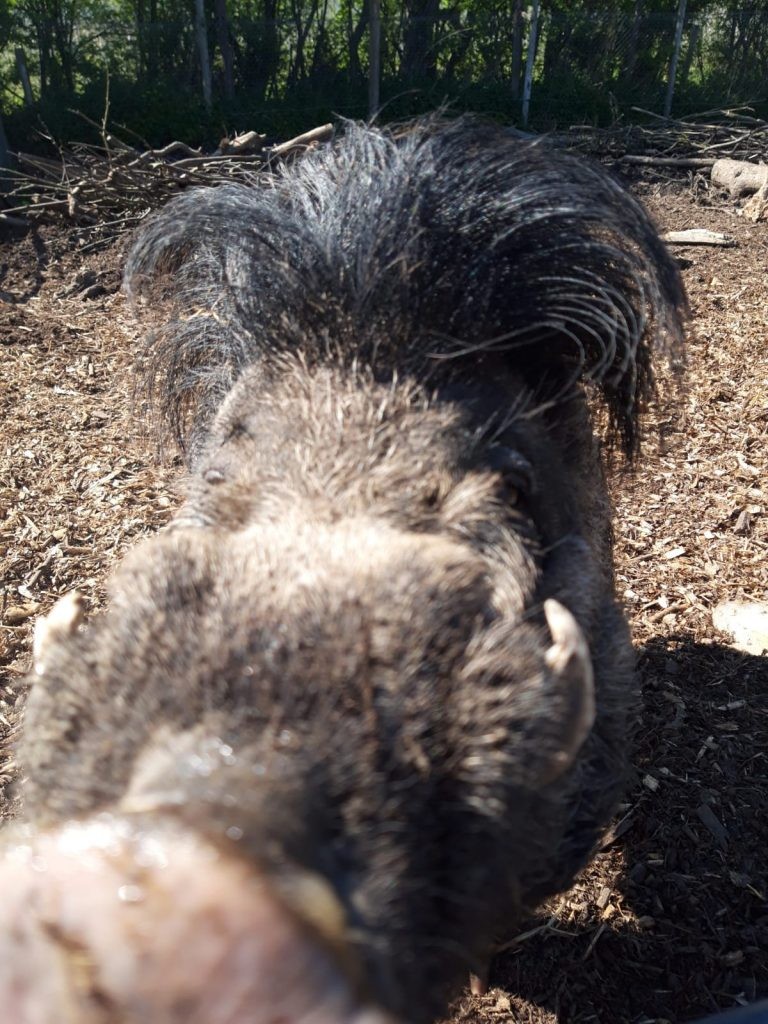Peppa Pig? Pumba the warthog? Babe the sheep pig? No, its Maximus and Achilles our Visayan Warty Pigs (Sus cebifrons).
On the mammals section we can boast having two of these magnificent creatures and they aren’t just any old porkers, they are an extremely rare species of warty pig with rock-star hair.

Critically Endangered Pigs?
200-300 Visayan warty pigs currently exist in captivity; their wild population is unknown.
Previously found throughout the lush rainforests of the Philippines’ six West Visayas Islands, the Critically Endangered pigs now roam small pockets of only two of these islands, Panay and Negros. These small isolated populations face numerous problems with sustaining their numbers. Human impact such as deforestation for valuable hardwoods in the 1970s and 80s ravaged the West Visayas, slashing the species’ habitat to less than 4 percent of its original size on Negros Island and less than 8 percent on Panay and intensive hunting for their meat continues to reduce numbers.
Domestic pigs also pose a significant threat to this species, hybridizing with wild warty pigs as well as introducing diseases and parasites. Visayan warty pigs killed by poachers now show obvious hybrid characters, including large ears, reduced manes, and even piebald markings.
Three rescue and breeding centres for this species have been created within the Philippines, and an international breeding program is underway, with captive stock in both North America and Europe.

The European Endangered Species Programme
All is not lost for our two boys, they are both single and ready to mingle but only for the right sows when they become available. Maximus and Achilles are both a part of the European Endangered Species Programme (EEP). The EEP is the most intensive type of population management for a species kept in a European zoo and each EEP has a coordinator who is assisted by a species committee.
The coordinator has many tasks to fulfil such as collecting information on the status of all animals of the species for which he or she is responsible for, producing a studbook, carrying out genetic analyses and producing a plan for the future management of the species. Together with the species committee, recommendations are made each year on which animals should or should not breed, which individual animals should go from one zoo to another and so on. Meanwhile our boys don’t need to sign up to piggy Tinder or any other dating websites just yet as it is all being taken care of for them.
Very little is known about these wild pigs and they were only recognised as a species in 1993.
If you regularly visit the park you’ll notice the boys grow long spiky mohawk like manes during the mating season, the lady pigs go mad for boars with this profile. If Elvis was still alive I’m sure he would be very jealous of their hairstyles, maybe even the American president Donald Trump could learn a thing or two about pulling off a certain unique hair-do.
I’ve also been asked several times what’s the secret to having such great hair, I can confirm from the boys its ‘au natural’ bed hair, they don’t use Wax or Brylcreem. However, this distinctive look doesn’t last, at the end of the breeding season the male becomes almost bald once again.

So why are they called Warty Pigs?
They receive their name from the three pairs of fleshy “warts” present on the visage of the boar and biologists speculate that the reason for the warts is to assist as a natural defence against the tusks of rival pigs during a fight.
While we may not know exactly how many species go extinct every day, many charities focus on the conservation of ambassador species such as Giant Pandas and Tigers but what about all the other not so cute and cuddly species?
The decline of this species, almost to the point of extinction, is blamed on habitat loss and hunting. To save and protect the warty pig species requires plenty of field research and work with local communities to educate them on how they can help to protect the pigs habitat. The known species of wild pigs are often perceived as ugly or no different than bacon on a plate. I find it a shame that people think it’s just a pig, for me they deserve attention just like any other species. Every species has the right to live and maintain their niche in the wild.



